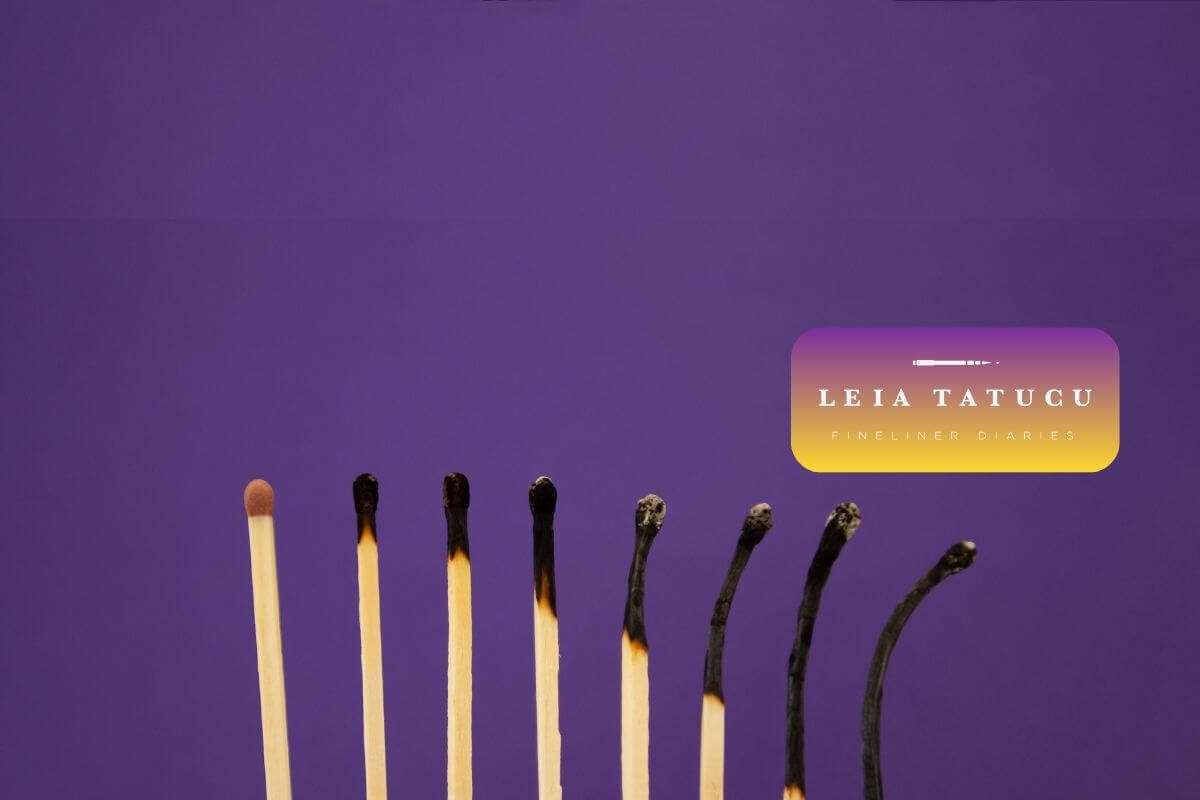
Rediscovering Balance: A Creative's Guide to Overcoming Burnout
Burnout— a word many of us know all too well. It often sneaks in, masked as dedication or ambition, until it takes hold. For creative professionals, burnout can be particularly devastating, draining the very spark that drives inspiration and passion. Recognizing its early signs and learning how to combat it can be the key to transforming exhaustion into lasting creative fulfillment.
If you’ve been pushing yourself too hard or finding it increasingly difficult to create, you’re not alone. Burnout affects independent artists, full-time designers, and writers alike. Learning to identify the signs and taking measures to recharge not only help you as an artist but ensure that your creativity continues to flourish. Here's how you can turn the tide, step by step.
Recognizing the Warning Signs of Creative Burnout
It can be tempting to dismiss early signs of burnout, convincing yourself they’ll improve once you “push through.” But ignoring these signs may only deepen the issue. Instead, acknowledge what your body and mind are telling you. Key signs to watch out for include:
1. Chronic Fatigue
Are you waking up just as exhausted as when you went to bed? Feeling perpetually tired is one of the first indications you might be overextending yourself.
2. Loss of Inspiration
Creative endeavors that once thrilled you may suddenly feel like a chore. If you can’t remember the last time you felt excited to work on a project, you might be experiencing burnout.
3. Overwhelm and Procrastination
Finding it difficult to start—even on small tasks? This mental block often stems from the feeling of being stretched too thin or overburdened.
4. Physical Symptoms
From headaches to tense muscles, burnout is not just mental. Emotional exhaustion often manifests physically, reinforcing the need to slow down.
5. Increased Frustration or Cynicism
Feeling irritable or dissatisfied with your work or creative process might signal that you need a reset.

Steps to Recharge and Rekindle Your Creativity
Burnout doesn’t resolve on its own—it requires action. The good news? Small, deliberate steps can lead to profound improvement over time.
1. Give Yourself Permission to Pause
The art of doing nothing is often undervalued. Allowing yourself time to rest can recharge your mental battery. This break doesn’t need to be long—sometimes, a single day of mindful unplugging can make a difference.
Try this today:
- Dedicate an afternoon to a non-creative hobby.
- Step outside for a walk without your phone or sketchpad.
- Watch the clouds drift, guilt-free.
2. Simplify Your Commitments
One of the most common causes of burnout is overcommitting. Take a critical look at your schedule and identify where you can say “no” or delegate. Then, set clear boundaries to protect your time and energy.
For example:
- Limit social media posting to twice a week instead of daily updates.
- Postpone projects that don’t align with your core goals.
- Replace multitasking with focused, single-task work sessions.
3. Reconnect with Play
Remember why you started creating in the first place—was it the joy of seeing a story unfold, experimenting with colors, or solving design problems? Revisit that spark by incorporating playful experimentation.
Ideas to try:
- Sketch something absurdly silly, with no intention of showing anyone.
- Use an unfamiliar medium, like sculpting with clay or finger painting.
- Collaborate casually with a friend by exchanging unfinished work, allowing each of you to complete the other's projects while enjoying the creative process together.
4. Practice Mindfulness
A racing mind and scattered thoughts often accompany burnout. Grounding yourself through mindfulness exercises can help regain clarity and focus.
Here’s how:
- Start the day with ten minutes of deep, intentional breathing.
- Journal your thoughts and frustrations to lighten their emotional load.
- Meditate during your breaks to reset your mental state.
5. Prioritize Your Well-being
Burnout recovery is as much about physical well-being as creative rest. Nurturing your body helps your mind function better.
Focus on:
- Nutrition by incorporating more whole, unprocessed foods into your meals.
- Movement, whether it's yoga, walking, or dancing to your favorite playlist.
- Sleep, ensuring you’re getting consistent, uninterrupted rest.

Sustainable Ways to Maintain Balance
Once recharged, the challenge becomes not falling back into old patterns. Building sustainable habits helps protect your creativity from future burnout.
1. Implement a Routine
Set predictable times for both focused work and relaxation. A routine doesn’t stifle creativity—it creates structure that your mind can lean on, helping you avoid overworking.
Example structure:
- Designate mornings for creative “deep work” without interruptions.
- Use afternoons for meetings, emails, and administrative tasks.
- End each day with relaxation—a good book, a podcast, or an outdoor activity.
2. Celebrate Small Wins
Pause to celebrate your progress, no matter how minor. A finished sketch, an extra follower on social media, or simply a good brainstorming session deserves acknowledgment. It feeds your sense of accomplishment and motivation.
3. Build a Supportive Community
Connect with like-minded creatives who inspire and uplift you. Having a network to share struggles or celebrate victories can provide perspective and encouragement when you need it most.
Ways to engage:
- Join online forums or follow artist communities where feedback is constructive.
- Attend local meetups or virtual workshops in your field.
- Start a group project that fosters camaraderie and shared accountability.
4. Set Clear Goals
Saying yes to every opportunity often erodes creative joy. Having clear, attainable goals helps you prioritize what truly matters while maintaining balance.
For example:
- Decide that your primary goal this year is to launch a self-published collection.
- Set milestones to meet over six- or twelve-month spans, limiting extra projects that don’t align.
5. Keep the Spark Alive
Finally, don’t lose sight of the people, places, and experiences that inspire you. Whether it’s immersing yourself in nature, wandering through art galleries, traveling, or simply sitting in a quiet coffee shop, fuel your creative spirit regularly.

Closing Thoughts
Burnout is not a sign of weakness—it's a signal that you care deeply about what you do. When you hit a wall, it doesn’t mean the end of inspiration; quite the opposite. It’s a chance to step back, re-evaluate, and return stronger.
Life as a creative can be unpredictable, but holding onto that sense of balance ensures your artistry doesn’t just survive—it thrives. After all, creativity isn’t just about producing beautiful things. It’s about finding beauty in the process itself, even in moments of recovery.
Take a moment today to pause, breathe, and be kind to yourself. Your imagination will thank you.





Leave a comment
This site is protected by hCaptcha and the hCaptcha Privacy Policy and Terms of Service apply.